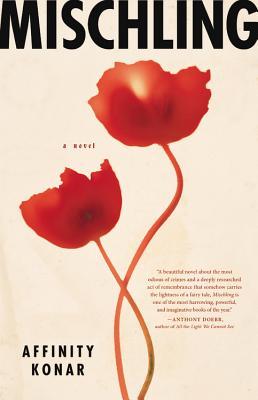What do you think?
Rate this book


344 pages, Hardcover
First published September 6, 2016
We donŌĆÖt always know ourselves, who we can become, what we may do, after evil has done what it likes with us.Coming of age is tough enough, but toss in a World War, a forced relocation to one of the most infamous vortices of evil the world has ever known, and, for good measure, add in being in the hands of one of the most truly black-souled human beings to have ever fouled the surface of the earth. But perhaps the light we cannot see is the one that illuminates the soul.
We were made, once. My twin, Pearl, and me. Or, to be precise, Pearl was formed and I split from her. She embossed herself on the womb; I copied her signature. For eight months we were afloat in amniotic snowfall, two rosy mittens resting on the lining of our mother. I couldnŌĆÖt imagine anything grander than the womb we shared, but after the scaffolds of our brains were ivoried and our spleens were complete, Pearl wanted to see the world beyond us. And so, with newborn pluck, she spat herself out of our mother.Had they known what lay in store they might have resisted coming out at all. Two pages and twelve years later the girls, along with their mother and grandfather (Zayde) are being dropped off at Auschwitz-Birkenau. Among the greeters is one , scanning the latest recruits for suitable fodder for his dark experiments. The Angel of Death had his own section at Auschwitz, The Zoo, where those selected were kept apart from the rest of the death-camp population, allowed privileges, more physical freedom, the ability to keep their own clothing, and greater food rations. But the screams from the doctorŌĆÖs infirmary broadcast the cost. Twins were in high demand at The Zoo, as were others considered genetically different, albinos, small people, those with mismatched eye colors, anyone with genetic deformities.


Everyone survived by planning. I could see that. I realized that Stasha and I would have to divide the responsibilities of living between us. Such divisions had always come naturally to us, and so there, in the early-morning dark, we divvied up the necessities: Stasha would take the funny, the future, the bad. I would take the sad, the past, the good.Stasha is more of a dreamer, but seeks satisfaction in revenge. Pearl seeks solace in forgiveness.
"For eight months we were afloat in amniotic snowfall, two rosy mittens resting on the lining of our mother. I couldnŌĆÖt imagine anything grander than the womb we shared, but after the scaffolds of our brains were ivoried and our spleens were complete, Pearl wanted to see the world beyond us. And so, with newborn pluck, she spat herself out of our mother."
"Since PearlŌĆÖs disappearance, IŌĆÖd noticed that animal life had become increasingly rare in Auschwitz. There was little hope of any arriving just because I wanted it to, and when no bird appeared, I put one there with my mind. In its beak, I made it carry a sprig of olive branch. But the bird kept dropping it. Even my own imagination, it seemed, had abandoned me."
My forgiveness was a constant repetition, and acknowledgement of the fact that I still lived; it was proof that their experiments, their number, their samples, was all for naught - I remained, a tribute to their underestimations of what a girl can endure.
They were children, once.

